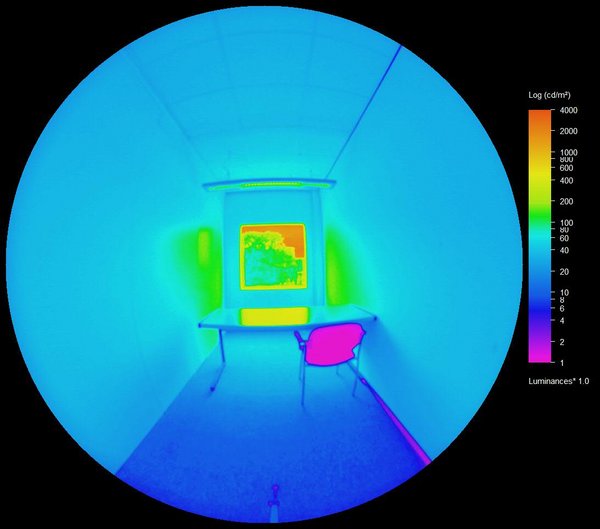
Name of student: Ir. S. (Sanae) Chraibi
Supervisors: Ir. M.P.J. (Mariëlle) Aarts, Dr. Ir. M.B.C. (Myriam) Aries, Prof. Dr. Ir. E.J. (Evert) van Loenen, Ir. T. Wagenaar (Peer +)
Chair research belongs to: Building Lighting
Strategic area: Health
Project year: 2011
Sky conditions in the Dutch climate change rapidly and an optimal daylight control system should be able to respond quickly to these changes to meet the energy efficiency and human comfort requirements. Smart Energy Glass (SEG), developed by Peer+ is a switchable glazing system, which can switch between a bright, a darkened, and a diffuse state to improve comfort, and it simultaneously generates energy. In this study transmittance values of the glazing were examined based on user perception and assessment in order to provide a visually comfortable environment.
An experiment was set up in the laboratory of the Building Physics and Services group of Eindhoven University of Technology, the Netherlands. Five similar full-scale test rooms were built with a West-facing window of 1.2 x 1.2 m². Four of the rooms were equipped for subjects and the fifth room functioned as a reference room. Each of the four rooms had different glass properties by the use of films with different light transmittances (LTA values 0.08, 0.25, 0.52, and 0.70). Measurements with subjects were executed during three seasons in 2010 (summer, autumn, and winter). The test subjects were asked to perform an office task in the four test space for 10 minutes each, followed by a questionnaire about visual comfort.
During measurements with sunlight on the façade, the test space with a glass transmittance of 0.25 was mostly evaluated for its good lighting by daylight. At cloudy days in the autumn and during winter, there is a desire for a higher light transmission. When assuming a linear progress of the preferred transmittances, a transmittance value of 0.65 would be recommended for optimal visual comfort. Taking the Peer+ desire, of switching with maximum 30% into account, leads to a lower transmittance boundary of 0.35. A transmittance range of 0.4 to 0.7 is best suited here.